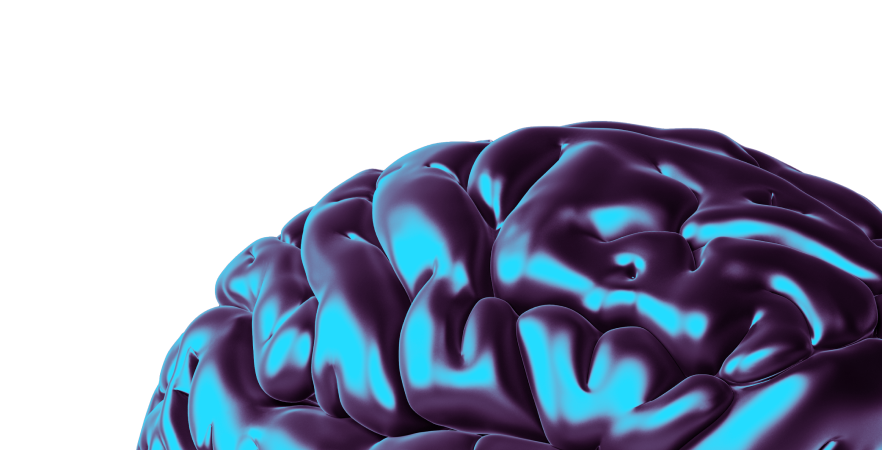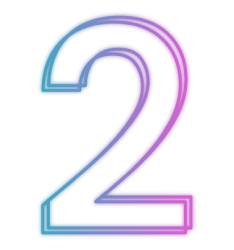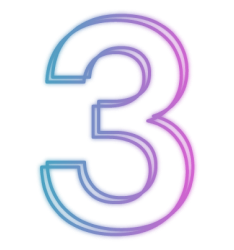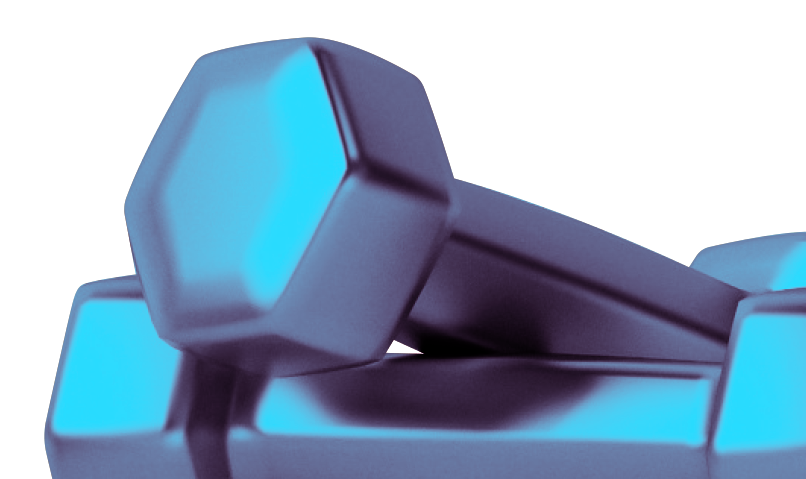
1 in 5 Americans experiences mental health issues every year. High stress, anxiety, burnout, and depression became even more prominent during the pandemic.
How will we deal with this crisis next year?

More people are learning about healthy living, but in reality, many still make unhealthy lifestyle choices. For instance, 1 in 4 adults doesn’t exercise enough.
How can we revolutionize physical fitness?

Obesity prevalence before the pandemic was 42% in the US, and during Covid-19, 40% of Americans gained weight. Nourishing food and gut health is the first aid to this crisis.
How can we tackle the obesity epidemic?

1 in 5 Americans uses a wearable fitness device. With more wearable technology entering the market, patients can use additional personalized care.
How does new technology impact health?

Digital health and e-health are gaining more traction. New tools focus on clearly defined target audiences – parents, children, couples, and employees.
Which new digital tools will aid in treatments?
47% of adults under the age of 30 said they needed mental health services in the past year but couldn’t access them. With limited mental health care access and prominent stigmatization, solutions focusing on a healthy mind are becoming more popular.



3 in 10 American adults say they are online almost constantly. Many seek to reverse the effects technology has on mental health. Digital detox retreats, phone silencing pouches, or analog alarm clocks are getting more popular. Basically, we went full circle – at first, we tried to put our entire lives into our phones, and now we went back to analog solutions.

Mental health care is in high demand, and not every person who needs it can access it. Digital solutions make professional advice more accessible and affordable, while anonymous treatment can benefit those who live in places where mental health disorders are still stigmatized.

As mental health care gets more available, so does the diagnosing process. Right now, researchers are exploring the possibility of detecting depression from specific types of proteins and enzymes found in the blood. Even though more research is needed, this might help people with depression get the necessary treatment faster.

In the face of the climate crisis, economic recession, and political and social issues, it seems that people want to find quicker ways to feel better. Mood-boosting apps are gaining popularity as people seek access to flexible tools that tweak their routines and help them feel more positive, grateful, and calm.

Solving issues with role play is not exactly new – plenty of therapists used this to unlock trauma in a safe setting. However, right now, multiple new businesses, such as Geek Therapeutics, are popping up and helping to deal with mental health issues in a more relaxed setting.

49–84% of adolescent boys are dissatisfied with their bodies. Teenage boys with a normal BMI want to gain muscle or “optimize” their health. Web searches about exercise, vitamins, and supplements are increasing as young people are researching information about creatine monohydrate, protein, or turkesterone.
Would you like to get updated about health trends every month?

Poor physical health leads to an increased risk of chronic disease, obesity, and lower quality of life. While most people know how to live healthily, not everyone can do it consistently. That’s why there is a need to create new and easier ways to stay fit and steer clear of unhealthy habits.



Muscle stimulation was mostly used in physical rehabilitation to stimulate muscles with low-impact electrical signals. Today, more gyms offer EMS suits for visitors seeking to increase their workout routine’s impact.

Staying physically fit might be an issue for people who find going to the gym boring or expensive or other options too time-consuming. Instead of carving out a workout out of their schedule, people choose activities that combine fitness and fun – such as Pokemon Go or Sweatcoin gamified apps. More apps are also utilizing community-building features to increase engagement and usability.

With cardiovascular issues on the rise, researchers are seeking new ways to prevent and treat the disease. A new study shows that daily breathing exercises can lower blood pressure and might be used instead of medication.

During the pandemic, people started working out at home – and it seems we don’t plan to stop soon. Low-impact workouts such as yoga or pilates are still trending upward, and after the initial rise of searches about at-home workouts, people are still likely to exercise at home. This might mean an increase in purchasing hybrid gym memberships, gym equipment, or home workout programs.

Even though smoking cigarettes has decreased significantly over the past decade, vaping is on the rise, especially among teenagers. More teens say they vape within 5 minutes of waking up. E-cigarettes are marketed as a “less harmful” option than cigarettes. However, there are no longitudinal studies to prove this claim, putting at least 4 in 10 American teenagers at higher health risks later in life.

Alcohol is still the most commonly used substance today, but young adults are increasing their usage of weed and different types of hallucinogenic drugs. These trends may raise the demand for new types of support systems for people who want to learn about drug safety and improved digital rehabilitation programs for those who want to quit using drugs.
Would you like to get updated about health trends every month?

The first step toward a healthy body is focusing on food quality. Americans are becoming more concerned about the nutritional value of food, its impact on digestion, the improvement of the immune system, and the sourcing of ingredients.



Fad diets are frowned upon, and more people have started to focus on eating mindfully. Research shows that focusing on your body’s hunger cues helps sustainably control weight and improve mental health. In 2023, we might see more mindful eating tools, such as mobile apps, popping up.

The culinary and psychedelic value of mushrooms are slowly giving way to it’s medicinal qualities. Early research defines promising results in using functional mushrooms for their antioxidant, anti-inflammatory, prebiotic, and other qualities. We could see more products that contain medicinal mushrooms in the market in the near future.

Choosing healthy pre-made meals is on the rise. Some people want to save money and eat healthily, so they choose to meal prep at home. Others want to do the same but don’t have time to cook, so they choose meal delivery services. Either way, the trend is clear: people seek quicker ways to eat healthier.

Not everyone who looks for health advice online seeks to lose weight. Even though weight loss apps are way more prominent, plenty of people seek help with gaining more weight, and the trend is especially prominent among young men who want to build muscle.
Would you like to get updated about health trends every month?

Medical technology advances swiftly, and as many new devices enter the market, most trends focus on regulation, data security, interoperability between systems, and proper usage of the health data gathered.



The pandemic made people more used to at-home testing kits, and we can expect the FDA to clear more at-home testing products soon, including at-home blood, urine, saliva, DNR, and gut health tests.

This August, FDA approved a new ruling that ensured Americans would be able to purchase hearing aid devices without a prescription. This might open up new opportunities for more similar devices to be accessed more easily.

Opioids are not the only prescription you can get for chronic pain. Last year, the FDA approved the first virtual reality system for patients with chronic lower back aches. Possibly, this will lead to even more opportunities for pain reduction using VR – or to using this technology while dealing with mental health issues, such as PTSD.

With plenty of wearable devices with sensors that display different types of health data, today’s challenge is learning to extract intelligence from information and make use of it in the doctor’s office. New startups emerge that help to bring health data from wearables such as Fitbit and share it with doctors or make sense of huge data sets using AI. At the same time, this raises the importance of data security, as this information is both extremely sensitive and valuable.

During the past few years, the usage of telehealth increased 38 times. While the usual doctor’s visits are back on the table, the new alternatives are more popular than before the pandemic. Some companies started to offer doctor’s visits directly to the patient’s home, while others offer remote doctor’s appointments that reduce the need to visit the hospital altogether.
Would you like to get updated about health trends every month?

There are no one-size-fits-all solutions when it comes to health. And even though digital health solutions were catering to the general population at first, today, we finally see digital tools that are dedicated to niche target audiences.



Most aspects of our lives moved online, and relationship building did, too. As people crave real connections, new tools emerge to help manage relationships and deepen the bonds. Apps like Agapé or Paired help to improve communication with interactive questions, quizzes, and tips for lasting partnerships and conflict resolution.

For years, most parenting-related apps focused on prenatal health and the early stages of life. But parents today are not very familiar with the timeline of a child’s development, and new types of parenting apps emerge that help with mental health, skill-enhancing, and habit-building for kids.

Language development apps progressed quickly after speech recognition software was able to transcribe children’s speech with 96% accuracy. This could mean that children of the future will build up their language skills not only with parents but also with tailored apps.

Apps for women are no longer just focused on fertility and are beginning to broaden the available functions. Possibly, more digital solutions will begin to address the gender health gap – the systematic undertreatment of female patients. Also, expect to see more companies offering solutions to embrace different stages of the menstrual cycle for better life planning.

Even though most lockdowns have ended throughout the world, the workplace is not always back to normal. The majority of businesses have become hybrid, with health benefits packages beginning to include digital health solutions that are suitable for remote and hybrid employees. Companies have started to focus more on health issue prevention to ensure lasting health.
Would you like to get updated about health trends every month?

Would you like to get updated about health trends every month?
